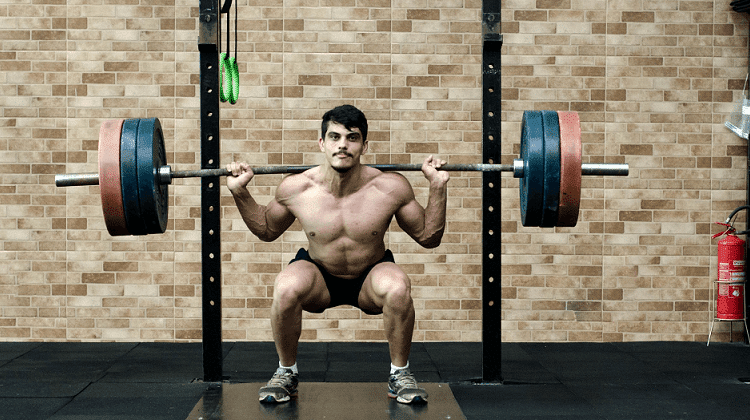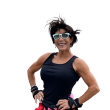Starting a fitness journey at the gym can be an exciting yet daunting experience. With a variety of equipment, exercises, and techniques available, it’s easy to feel overwhelmed, especially
if you are a beginner.
However, the key to success lies in mastering a few foundational exercises that will set the stage for your progress.
Whether your goals are to lose weight, build muscle, or simply improve your overall health, these exercises will help you develop strength, stability, and confidence.
In this guide, we will explore the best exercises for new gym goers, offering detailed instructions on how to perform each one with proper form.
Squats: The King of Lower Body Exercises
Why Squats?
Squats are one of the most effective exercises for developing lower body strength and power.
They primarily target the quadriceps, hamstrings, glutes, and calves, while also engaging the core for stability. This makes squats a compound movement, meaning they work multiple muscle groups at once, leading to a more efficient workout.
How to Perform Squats:
Start Position:
Stand with your feet shoulder-width apart, toes slightly pointed out. Keep your chest lifted, shoulders back, and gaze forward.
Movement:
Begin the movement by bending at the hips and knees simultaneously, as if you are sitting back into a chair.
Lower your body until your thighs are parallel to the floor (or as low as your flexibility allows).
Make sure your knees track over your toes, but do not extend beyond them. Your weight should be on your heels, and your back should remain neutral throughout the movement.
Return:
Push through your heels to stand back up, extending your hips and knees fully at the top. Squeeze your glutes as you return to the starting position.
Tips:
Start with bodyweight squats to ensure proper form before adding weight. As you progress, you can incorporate a barbell or dumbbells for added resistance. Remember to breathe in as you lower your
body and exhale as you push back up.

Push-Ups: The Ultimate Upper Body Builder
Why Push-Ups?
Push-ups are a versatile and accessible exercise that targets the chest, shoulders, triceps, and core. They are a fundamental movement that improves upper body strength and muscular endurance. In addition, push-ups can be performed anywhere, making them a staple in any fitness routine.
How to Perform Push-Ups:
Start Position:
Begin in a plank position with your hands placed slightly wider than shoulder-width apart, fingers pointing forward. Your body should form a straight line from your head to your heels.
Movement:
Lower your body by bending your elbows, keeping them close to your torso. Continue lowering until your chest nearly touches the floor, maintaining a straight line from head to heels. Push through your palms to extend your elbows and return to the starting position.
Tips:
If traditional push-ups are too challenging, modify them by performing knee push-ups or incline push-ups against a bench or wall. Focus on keeping your core tight and avoiding any sagging in the lower back.
Deadlifts: Full-Body Strengthening
Why Deadlifts?
Deadlifts are a powerful exercise that targets the posterior chain, including the glutes, hamstrings, lower back, and core.
Deadlifts are highly effective for building overall strength, improving posture, and enhancing functional movement patterns that you use in daily life.
How to Perform Deadlifts:
Start Position:
Stand with your feet hip-width apart, with a barbell positioned over the middle of your feet. Bend at the hips and knees to grip the barbell with both hands, your arms just outside your knees.
Movement:
Engage your core, straighten your back, and lift the barbell by extending your hips and knees. Keep the bar close to your body as you stand up straight.
Once you reach a full standing position, pause briefly before lowering the bar back down with control by bending at the hips and knees.
Tips:
Focus on maintaining a neutral spine throughout the lift to prevent injury. Start with lighter weights to master the form before increasing the load. Deadlifts are all about technique, so ensure you are lifting with your legs and hips, not your back.
Rows: Strengthening Your Back and Biceps
Why Rows?
Rows are crucial for developing a strong back and biceps, improving posture, and preventing muscular imbalances. They also engage the core and rear deltoids, making them an essential exercise for upper body strength.
How to Perform Rows:
Start Position:
With a barbell or dumbbells in hand, hinge at your hips, keeping your back straight and your knees slightly bent. Your torso should be nearly parallel to the ground, with your arms hanging straight down.
Movement:
Pull the weights towards your torso, leading with your elbows and squeezing your shoulder blades together at the top of the movement. Lower the weights back down slowly and repeat.
Tips:
Avoid using momentum to lift the weights; focus on controlled, deliberate movements. Keep your core engaged to prevent rounding your back.
Rows can be performed with a variety of equipment, including barbells, dumbbells, and cable machines.

Planks: Core Stability and Strength
Why Planks?
Planks are one of the most effective exercises for building core stability, strength, and endurance. They engage multiple muscle groups, including the abdominals, lower back, shoulders, and glutes, making them a comprehensive core workout.
How to Perform Planks:
Start Position:
Begin in a forearm plank position, with your elbows directly under your shoulders and your body forming a straight line from head to heels.
Movement:
Engage your core, squeeze your glutes, and hold the position without letting your hips sag or rise. Maintain steady breathing throughout.
Tips:
Start with 20 to 30 second holds, gradually increasing the duration as you build strength. To add variety, try side planks, plank shoulder taps, or plank reaches.
Lunges: Dynamic Lower Body Work
Why Lunges?
Lunges are excellent for building leg strength, improving balance, and targeting muscles individually for balanced development. They work the quads, hamstrings, glutes, and calves while also engaging the core.
How to Perform Lunges:
Start Position:
Stand with your feet together. Take a step forward with one leg and lower your hips until both knees are bent at 90-degree angles.
Your back knee should hover just above the ground, and your front knee should be directly over your ankle.
Movement:
Push through the heel of your front foot to return to the starting position, then switch legs. Perform lunges walking forward or in place.
Tips:
Keep your torso upright throughout the movement and ensure your front knee does not extend beyond your toes. For an added challenge, hold dumbbells in each hand.
Overhead Press: Building Shoulder Strength
Why Overhead Press?
The overhead press is a powerful exercise for building shoulder strength, stability, and size. It also works the triceps and upper chest, contributing to overall upper body development.
How to Perform Overhead Press:
Start Position:
Stand with your feet shoulder-width apart, holding a barbell or dumbbells at shoulder height with your palms facing forward.
Movement:
Engage your core and press the weights overhead until your arms are fully extended. Lower the weights back to the starting position with control.
Tips:
Avoid arching your lower back as you press; engage your core to keep your spine neutral. Start with lighter weights to ensure proper form.
Embarking on a fitness journey can feel overwhelming, but focusing on these essential exercises will provide you with a strong foundation to build upon. Consistency is key, therefore commit to practicing these movements regularly, and you will soon see improvements in your strength, stability, and overall fitness.
Also, do not be afraid to ask for help or seek guidance from a trainer if you are unsure about your form or need advice on progressing your workouts.
At Anabolic Coach, we have IFBB Pro consultants offering free coaching to beginners to help make their fitness journey a whole lot fun.

Conclusion
As a beginner in the gym, mastering the basics is crucial for long-term success. The exercises outlined in this guide offer a comprehensive approach to developing strength, improving endurance, and gaining confidence in your abilities.
Remember, every fitness journey is unique, so listen to your body, progress at your own pace, and enjoy the process of becoming stronger and healthier.
If you found this guide helpful, please like, share, and comment with any questions or experiences you would like to share. And don’t forget to subscribe to our YouTube channel for more fitness tips and workout routines!


